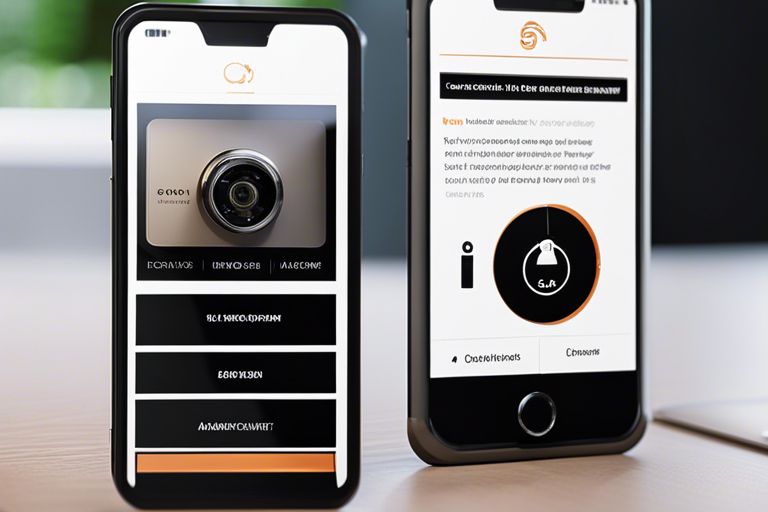Threat modelling is an necessary process in developing secure software applications. By systematically identifying and prioritising potential threats, developers can proactively design robust security measures to protect against vulnerabilities. In this article, we will explore the key steps involved in threat modelling and how it can be effectively utilised to enhance the security of your software development projects. With the constant evolution of cyber threats, incorporating threat modelling into your development process is crucial to mitigate risks and build resilient software systems.
Key Takeaways:
- Threat modelling is a proactive approach to identifying potential threats and vulnerabilities in software development.
- It helps in understanding the security risks, prioritising them, and implementing appropriate countermeasures early in the development lifecycle.
- Threat modelling can be integrated into various development methodologies such as Agile, DevOps, and Waterfall.
- Key benefits of threat modelling include reducing security incidents, lowering development costs, and enhancing the overall security posture of the software.
- It is vital for organisations to train their development teams in threat modelling techniques to ensure secure software development practices.
Preparing for Threat Modelling
Identifying Assets and Systems
Before plunging into threat modelling, it is crucial to identify and understand the assets and systems within your software or application. This includes data, software components, hardware, network infrastructure, and any other elements that are vital for the functioning of your system. By having a clear overview of these assets, you can effectively assess the potential threats and vulnerabilities that may impact them.
Defining Security Objectives
Defining security objectives is a key step in preparing for threat modelling as it sets the foundation for the entire process. Security objectives outline the goals and priorities of the security measures that need to be implemented to protect your assets and systems. These objectives should be specific, measurable, achievable, relevant, and time-bound (SMART) to ensure a clear direction for the threat modelling exercise.
It is vital to involve stakeholders from various departments, including developers, security experts, and business representatives, when defining security objectives. This collaboration will help in aligning security goals with the overall business strategy and ensuring that the threat modelling process addresses the most critical security concerns.
Key Components of Threat Modelling
Identifying Threats
Identifying threats is the crucial first step in threat modelling. This involves brainstorming and listing all potential threats that could target the system or application. It is important to consider various threat actors, such as hackers, insiders, or even natural disasters, and understand their capabilities and motivations.
Assessing Vulnerabilities
Assessing vulnerabilities involves examining the security weaknesses within the system that could be exploited by threats. This step requires a thorough analysis of the system’s architecture, design, and implementation to identify any potential gaps or flaws. Tools like security scanners, code reviews, and penetration testing can be utilised to uncover vulnerabilities.
During the process of assessing vulnerabilities, it is imperative to prioritise the identified weaknesses based on their potential impact and likelihood of exploitation. This allows developers to focus on addressing high-risk vulnerabilities that pose the most significant threat to the security of the system.
How-To: Implementing Threat Modelling
Tips for Effective Threat Analysis
When conducting threat modelling for secure development, there are several key tips to ensure effective analysis. Firstly, involve a diverse team of experts from different backgrounds to bring unique perspectives to the process. Secondly, clearly define the scope and boundaries of the threat modelling exercise to focus efforts on the most critical areas. Lastly, regularly review and update the threat model to adapt to changing threats and technology landscapes.
- Involve a diverse team of experts
- Define clear scope and boundaries
- Regularly review and update the threat model
Thou, by following these tips, you can enhance the depth and accuracy of your threat analysis, ultimately leading to stronger security measures in your development process.
Factors to Consider When Prioritizing Threats
When prioritizing threats identified through the threat modelling process, it is necessary to consider factors such as the likelihood of the threat occurring, the impact it could have on the system or data, and the ease of exploitability by malicious actors. Additionally, factor in any regulatory requirements or industry standards that may influence the prioritization of threats within your specific context.
- Likelihood of threat occurrence
- Impact on system or data
- Exploitability by malicious actors
- Regulatory requirements and industry standards
Thou, by carefully weighing these factors, you can prioritise threats effectively and allocate resources to mitigate the most critical risks first.
Integrating Threat Modelling into the Development Lifecycle
Incorporation into Agile Processes
When incorporating threat modelling into Agile processes, it is crucial to involve all team members right from the initial planning stages. By integrating threat modelling into the iterative development cycles of Agile, teams can identify potential security vulnerabilities early on and address them promptly. This approach ensures that security considerations are not overlooked or treated as an afterthought, leading to more robust and secure applications.
Ensuring Continuous Improvement
Ensuring continuous improvement in threat modelling involves regularly revisiting and updating threat models to adapt to changing environments, technologies, and threats. By setting up mechanisms to evaluate the effectiveness of threat modelling practices, teams can identify areas for enhancement and make proactive adjustments. This iterative process helps in staying ahead of emerging security risks and strengthening the overall security posture of the application.
Continuous monitoring and feedback loops are crucial in ensuring that threat modelling remains relevant and effective throughout the development lifecycle. By incorporating lessons learned from past experiences and feedback from security assessments, teams can refine their threat modelling approach and elevate the security standards of their software products.
Conclusion: How to Use Threat Modelling in Secure Development
In the long run, incorporating threat modelling into the secure development process is paramount in identifying potential vulnerabilities early on and implementing appropriate countermeasures. By systematically identifying and prioritising threats, developers can proactively enhance the security of their applications, ultimately reducing the risk of cyber attacks and data breaches. Through the structured approach of threat modelling, focusing on assets, adversaries, vulnerabilities, and impacts, developers can gain a comprehensive understanding of potential risks and make informed decisions to mitigate them effectively. Embracing threat modelling as a fundamental aspect of secure development practices can significantly strengthen the security posture of software applications and systems, enhancing overall resilience against evolving cyber threats.
FAQ
Q: What is Threat Modelling in Secure Development?
A: Threat Modelling is a structured approach to identifying and evaluating potential security threats in a system or application during the development process.
Q: Why is Threat Modelling important in Secure Development?
A: Threat Modelling helps developers anticipate and mitigate potential security risks early in the development lifecycle, reducing the likelihood of vulnerabilities being exploited by malicious actors.
Q: What are the key benefits of using Threat Modelling?
A: Key benefits of Threat Modelling include improved understanding of system security requirements, more effective risk management, and enhanced collaboration between development teams.
Q: How can Threat Modelling be incorporated into the development process?
A: Threat Modelling can be integrated into the development process by conducting regular threat modelling sessions, using tools to automate the process, and ensuring that security considerations are addressed at each stage of development.
Q: What are some common approaches to Threat Modelling?
A: Common approaches to Threat Modelling include STRIDE (Spoofing, Tampering, Repudiation, Information Disclosure, Denial of Service, Elevation of Privilege) and DREAD (Damage, Reproducibility, Exploitability, Affected Users, Discoverability), among others.






